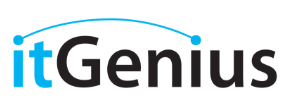If you're a business owner and you are trying to navigate the hellish landscape of synchronizing your contacts, I'm going to share a couple of things that you got to get right for the absolute basics to make sure that your contacts are working swimmingly both your business and your personal life.
Did you find this video helpful? Let us know by dropping a comment below!
To learn more about our Cloud Support Service, or schedule an IT Systems Check, contact itGenius - the Google Workspace Experts
Transcription:
If you're a business owner and you are trying to navigate the hellish landscape of synchronizing your contacts, well in this video, I'm going to share a couple of things that you got to get right for the absolute basics to make sure that your contacts are working swimmingly both your business and your personal life. Today, my name is Peter Moriarty. And if you're new to the channel, I run a business called it genius. And we help small and medium sized business owners with everything to do with the Google world and Small Business Technology. Now, no matter what stage of business you're at, right now, we help businesses with the right technology strategy through each stage of business, which is what we call our growth roadmap. And if you haven't already checked out our playlists, where we've got heaps of videos on relevant technology strategy for you, no matter where you are in your business right now, now today, we're going to talk a little bit about contacts and synchronizing contacts, specifically, down to your mobile phone from your Google workspace account. Now, what tends to happen with most business owners is they start out with a Google account, whether it's you at your business.com, or maybe you've got a Gmail account, and contacts just start to build up. And you know, that's basically how Google's been designed to anyone that you email that can forward automatically gets added to your contacts. And for most people, you know, in the old days, if you remember, when we had something like Microsoft Outlook, we probably keep our contacts pretty tidy, we would keep them maintained in some ways. But if you've been to networking events, if you started receiving newsletters, if you've got hundreds or even 1000s of customers, quite often what happens is the contact register starts to quickly ballooned out of control. And what ends up happening is for most people that you have 1000s, or potentially even 10s of 1000s of contacts, that just build up over time. And I know, personally, in my own contacts inside of Google, there's more than 10,000 contacts in there. Just because of the number of emails that I've received and sent over the years, I've been running my business more than 15 years now. And it can feel really overwhelming. So that's not really a problem when you're just working on your business, you know, Outlook, or your business, Gmail or your business Mac mouth, because you're probably going to want to have access to everyone that you've ever emailed there. But if you decide to synchronize that contact database down to your mobile phone, all of a sudden, you're going to end up with 10,000 contacts down on your mobile phone, which at best case, is going to make a little bit cumbersome to try and find you know, your mom or your auntie or someone when you need to, you know, scroll to the address book to call someone when you down the street. But worst case, might actually slow down your phone, or cause issues with synchronization, just because there's literally so much data to synchronize. Now, it's not like there's 20 gigabytes of data that has to be downloaded to your phone. But just the index of that Contacts database can actually slow things down. And I've noticed that on some Android devices, when I've used it, what are some of the ways that we can address this and for business owners who want to keep access to all of those contacts, you know, probably important to have around the business. But you don't necessarily want to have every single one of them on your phone. We're going to talk a little bit about that when you have the option to synchronize your contacts to your phone, whether it's an iPhone or an Android phone, you can choose what you synchronize, you know whether you want to synchronize everything from your let's say, your Google workspace account, which is going to be everything that's stored online in your Gmail, or if you want to synchronize to iCloud, if you're on an Apple device. Or if you're on an Android device, you can actually choose multiple Google accounts to synchronize or not synchronized from. And when I was using an Android phone, the trick that I would do is I would actually use a personal Google account. We've got other videos on it a personal Google workspace account that I use my family, and that account is the one that I would have all of my personal contacts in. That was basically the first start of me deciding to split and divide the context that I had for personal use that I wanted to have on my mobile phone, and all of my customers all of my business contacts that I want to have in my Gmail, yes, obviously, I'm doing a lot of work on the go and on the run, when I'm out and about. But I don't necessarily want every single person that I've ever contacted synchronized down to my address book in my mobile phone, we use a online phone system so that nobody has my direct mobile number. So people are unlikely to call me on my mobile, I don't need to worry about you know, knowing who's calling or anything like that, because we use Dialpad, which is pretty amazing online phone system. There's other videos to that if you check out the link below. But what I decided was that I just wanted to have like the key contacts in my life, the key kind of 200 300 people in my life that I want to interact with synchronize to my phone. How did I do this? Well, on the Android device, I chose to set up that personal Google workspace account. And I had all my personal contacts in there. And that's the one that I chose to synchronize the context down to my phone. Now I still have my calendar, I still have my email, and I still had everything else accessible. But I just wanted them in one place. So you might be wondering, well, what about if you're on iOS? How do you get that to work for if you're on iOS, you may choose to use something like iCloud for your personal contacts. Or again, you may choose to just synchronize contacts down from a Google account that is a personal Google account that you use for your personal contacts. And that is my recommendation. Now for many people who have contacts both online in some kind of online service whether that be iCloud Google workspace, Microsoft Exchange even but you also have some contacts that you've just kind of punched into your phone. And they can be a little bit of a divide where those contacts actually go. And what tends to happen is some contacts end up in iCloud or just locally stored on the local mobile device. But they don't necessarily synchronize back up to the web or back up to online. And if you go through your settings on your phone, or whether you're on an Android phone or an iOS device, on Android, it'll be an accounts on iOS, it'll be in Settings, and then mail contacts calendars. Now from there, you can actually see which accounts are connected. And you may find that you have multiple accounts connected right now, my recommendation would be to stick to one single source of truth. And that one single source of truth will be the one contact database that you want to have with you. And what that means is that you only have one place to check if your contacts are in sync. And you only have one place where you add a contact for that contact to go. Where people run into trouble is they're adding contacts, and they're going into different databases and synchronizing to different accounts on to iCloud, some to Google something online somewhere on the device. And then things end up in an absolute mess. Now, I've already mentioned keeping things separate between personal and business. And to me, the most important thing is that I have a clean and tidy experience. I don't mind sitting down on Gmail to do my work. And you know, looking at business contacts there, knowing that I can also always access my Google contacts from the browser, or even using the Contacts application if I decide to re add that account at a later date. But for me, I'd rather just keep personal contacts on my mobile phone. That's kind of my personal space. I keep my business contacts online. Of course, because we're using a tool like copper CRM, all of my business contacts are actually synchronized and stored inside of the CRM app. So if I was to need to access my customer database on the go, I could jump straight into the copper CRM app and have access to all of my contacts on the go. If you liked this video, and you're interested in more content just like this, what give us a thumbs up and maybe even hit the subscribe button. If you'd like to see more of this content. If you are already a Google workspace subscriber. Well, we've got a pretty amazing offer view it's called our transfer in. And what that gives you access to just by transferring your billing to us at no extra cost is an online library of amazing professionally produced videos to train you and your team on getting the most out of your investment in Google workspace. We also have a bunch of exclusive webinars there that have been recorded just for our community members that are accessible to you, which is a massive, massive cost saving, but you also get access to a free account checkup and our team will jump in and check to see if there's anything you've missed in the setup or anything that we could do to potentially help you improve your workspace account. If you'd like access to that, check out that below. Otherwise, I will see you in the next video.
To learn more about our Cloud Support Service, or schedule an IT Systems Check, contact itGenius - the Google Workspace Experts




